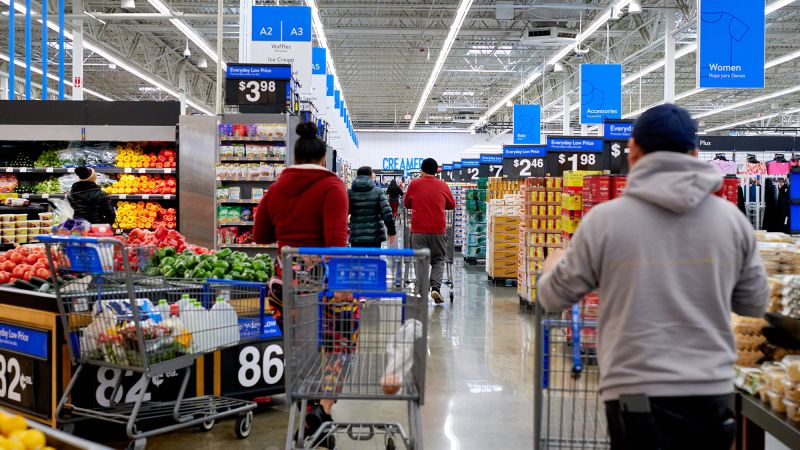
Walmart and Target are slashing prices. What does that mean for inflation?
CNN
Americans might notice markdowns for some everyday essentials during their weekly grocery runs. That doesn’t mean the battle against inflation is won.
A version of this story first appeared in CNN Business’ Before the Bell newsletter. Not a subscriber? You can sign up right here. You can listen to an audio version of the newsletter by clicking the same link. Americans might be noticing markdowns for some everyday essentials during their weekly grocery runs. That doesn’t mean the battle against inflation is won. Walmart saw first-quarter sales at stores open at least a year climb 3.8% from the prior year, in part thanks to its ability to keep prices low even as inflation remains sticky. The largest retailer in the United States has been a mainstay for cash-strapped consumers shopping for deals on groceries and other merchandise. Now Walmart is taking things one step further. The superstore said on May 16 that it has rolled back prices on nearly 7,000 items in its stores, noting deflationary trends in general merchandise. Inflation during the first quarter increased at half the rate seen last year, it added. “Our combination of everyday low prices plus a large number of rollbacks is resonating” with consumers, Walmart CEO Doug McMillon said on a call with analysts. On Monday, Target slashed prices on more than 1,500 items, ranging from laundry detergent to cat food to sunscreen, with thousands more price cuts expected over the summer. For example, the price of a pack of 16 Huggies baby wipes fell to 99 cents from $1.19 and roasted nuts from the Good & Gather brand now cost $5.29 from $6.89, according to a press release.





















 Run 3 Space | Play Space Running Game
Run 3 Space | Play Space Running Game Traffic Jam 3D | Online Racing Game
Traffic Jam 3D | Online Racing Game Duck Hunt | Play Old Classic Game
Duck Hunt | Play Old Classic Game



